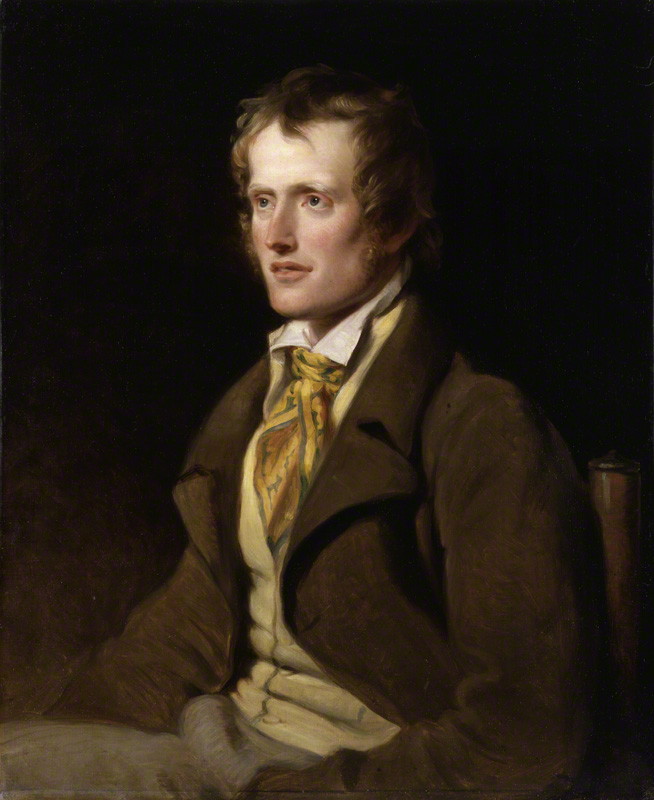John Clare (1793 –1864)
John Clare was an English poet, the son of a farm labourer, who came to be known for his celebratory representations of the English countryside and his lamentation of its disruption.
His poetry underwent a major re-evaluation in the late 20th century, and he is now often considered to be among the most important 19th-century poets.
His biographer Jonathan Bate states that Clare was “the greatest labouring-class poet that England has ever produced. No one has ever written more powerfully of nature, of a rural childhood, and of the alienated and unstable self”.
Clare was born in Helpston, six miles north of Peterborough.
He became an agricultural labourer while still a child although attending school in Glinton church until he was 12.
Clare became a potboy in the Blue Bell public house and fell in love with Mary Joyce but her father, a prosperous farmer, forbade her to meet him. Subsequently he was a gardener at Burghley House.
In 1810 he moved to Grantham to seek employment and lodged at the Crown & Anchor in Swinegate, before moving on to Newark.
He enlisted in the militia, tried camp life with Gypsies, and worked in Pickworth as a lime burner in 1817.
The following year he was obliged to accept parish relief. Malnutrition stemming from childhood may be the main culprit behind his 5-foot stature and may have contributed to his poor physical health in later life.
Clare began to write poems and sonnets. In an attempt to hold off his parents’ eviction from their home, he offered his poems to a local bookseller named Edward Drury. Drury sent Clare’s poetry to his cousin John Taylor of the publishing firm of Taylor & Hessey, who had published the work of John Keats. Taylor published Clare’s Poems Descriptive of Rural Life and Scenery in 1820. This book was highly praised, and in the next year his Village Minstrel and other Poems was published.
He had married Martha (“Patty”) Turner in 1820. An annuity of 15 guineas from the Marquess of Exeter, in whose service he had been, was supplemented by subscription, so that Clare became possessed of £45 annually, a sum far beyond what he had ever earned.
Soon, however, his income became insufficient, and in 1823 he was nearly penniless. The Shepherd’s Calendar (1827) met with little success, which was not increased by his hawking it himself.
As he worked again in the fields his health temporarily improved; but he soon became seriously ill. Earl FitzWilliam presented him with a new cottage and a piece of ground, but Clare could not settle in his new home.
Clare was constantly torn between the two worlds of literary London and his often illiterate neighbours; between the need to write poetry and the need for money to feed and clothe his children.
His health began to suffer, and he had bouts of severe depression, which became worse after his sixth child was born in 1830 and as his poetry sold less well. In 1832, his friends and his London patrons clubbed together to move the family to a larger cottage with a smallholding in the village of Northborough, not far from Helpston.
His last work, the Rural Muse (1835), was noticed favourably by Christopher North and other reviewers, but this was not enough to support his wife and seven children. Clare’s mental health began to worsen. As his alcohol consumption steadily increased along with his dissatisfaction with his own identity, Clare’s behaviour became more erratic.
A notable instance of this behaviour was demonstrated in his interruption of a performance of The Merchant of Venice, in which Clare verbally assaulted Shylock.
He was becoming a burden to Patty and his family, and in July 1837, on the recommendation of his publishing friend, John Taylor, Clare went of his own volition (accompanied by a friend of Taylor’s) to Dr Matthew Allen’s private asylum High Beach near Loughton, in Epping Forest. Taylor had assured Clare that he would receive the best medical care.
In 1841, Clare absconded from the asylum in Essex, to walk some 90 miles (140 km) home, believing that he was to meet his first love Mary Joyce; Clare was convinced that he was married to her and Martha as well, with children by both women.
He did not believe her family when they told him she had died accidentally three years earlier in a house fire.
He remained free, mostly at home in Northborough, for the five months following, but eventually Patty called the doctors in.
He died on 20 May 1864, and his remains were returned to Helpston for burial in St Botolph’s churchyard.





Leave a Reply
You must be logged in to post a comment.